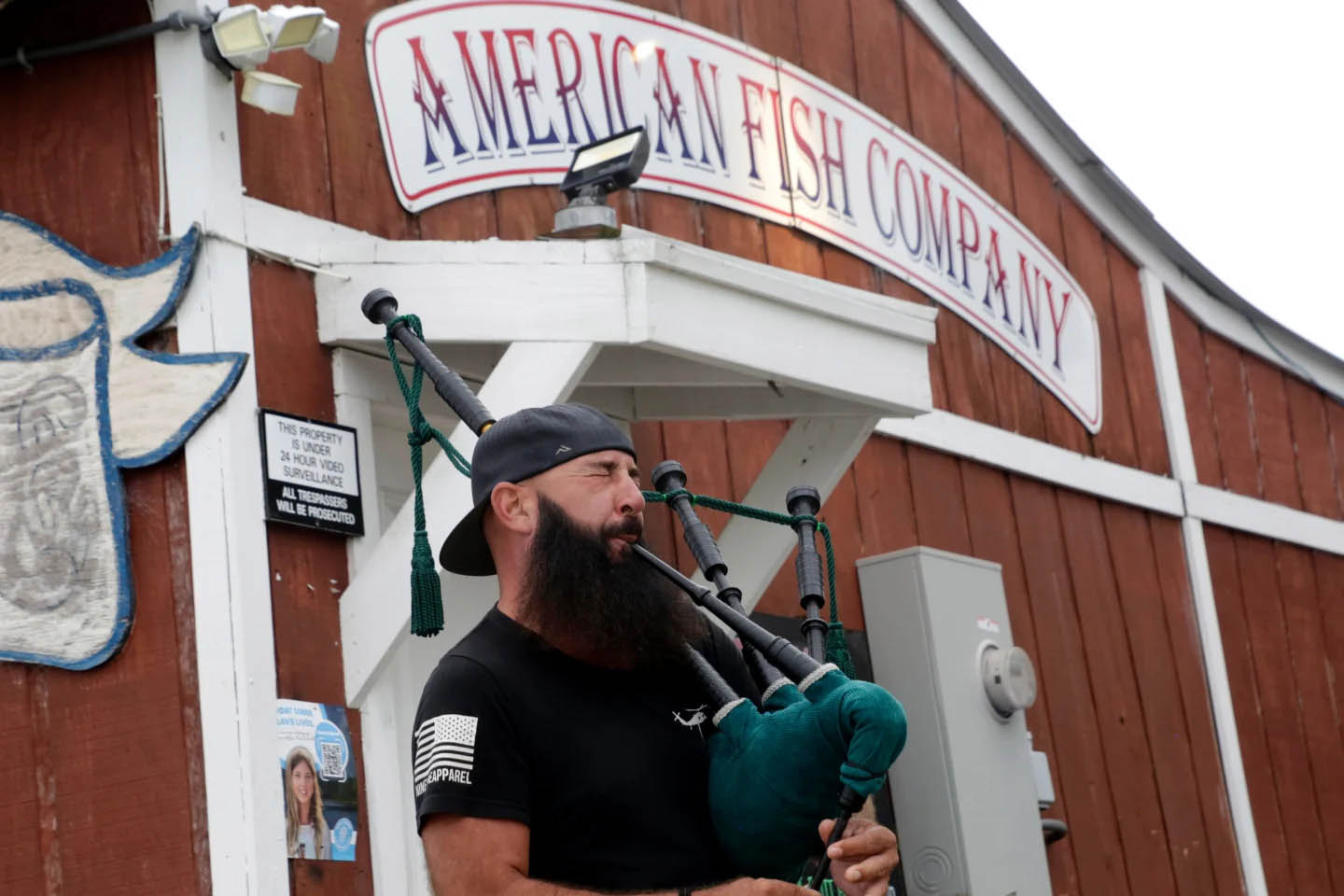By DOUG FERGUSON AP Golf Writer
FARMINGDALE, N.Y. (AP) — Team Europe already had demolished and disheartened the Americans in another Ryder Cup romp on Saturday, and it wasn’t finished.
The final match of a long, loud and obnoxious day at Bethpage Black was all square when Matt Fitzpatrick blasted out of a fairway bunker and heard European cheers when his ball spun back to 2 feet away. Next to play was Tyrrell Hatton, whose shot into the 18th hole spun back and nicked his teammate’s ball.
It summed up how the exquisite golf of Europe, which took on every challenge — starting with a gallery so hostile extra security was required — and wound up in the Ryder Cup record book for the largest lead in the modern format: Europe 11 1/2, United States 4 1/2.
“I didn’t really imagine this,” European captain Luke Donald said.
Europe needs only to win three of the 12 singles matches Sunday to take that precious gold trophy back home across the Atlantic Ocean. Donald has turned to 45-year-old Justin Rose to lead off against Cameron Young, followed by Tommy Fleetwood, who can become the first European to go 5-0 on the road.
The main attraction is Rory McIlroy against Scottie Scheffler, the game’s top two players who have three majors and 10 victories this year among them.
The real attraction is Europe. The louder and more vulgar it got, the better they played.
“Things got tougher out there, and it fired them up even more,” Donald said. “They were able to get better through those difficult moments out there. That is what makes me most proud as a captain, just their ability to take the punches and come back even stronger.”
McIlroy caught the brunt of verbal abuse and at one point turned to the spectators and said, “Shut the (expletive) up.” And then he stuffed his shot to 5 feet for birdie that closed out the foursomes match on the 16th hole for another blue point.
There was nothing the not-so-mighty U.S. team could do.
“I think it’s one of the best performances of a road team in any sport. They have played incredible. They have played great. They have putted even better,” U.S. captain Keegan Bradley said. “They have come into a hostile environment and played great golf.
“You know, sometimes as a competitor, as an athlete, you have to take a step back and again sort of tip your cap to something like that.”
That’s about all he could do.
The previous record after the four sessions of team play was 11-5. No team has rallied from more than a four-point deficit on the last day. Europe needs to win only three of the 12 singles matches for the outright win.
Scheffler also made it into the Ryder Cup record book. The world’s No. 1 player is the first to go 0-4 under the current format.
The Americans had a lead in only three of the 70 holes played in fourballs Saturday afternoon. U.S. Open champion J.J. Spaun hit it tight on the 17th and 18th for birdies as he and fellow San Diego State alum Xander Schauffele squeezed out one of only two U.S. points on the day.
The other belonged to Bryson DeChambeau and Young in the opening foursomes match.
“The course is set up relatively easy, and they’re making a lot of birdies and we’re not,” Schauffele said. “They’re just beating us flat out, and I’m just happy to get a point with J.J. A little bit of red on the board is a win today.”
Europe swept all four team sessions for the first time since its 2006 win at The K Club in Ireland. At stake Sunday is a chance to break the record for the biggest rout — 19-9 by the Americans at Whistling Straits in 2021.
The New York fans didn’t turn on the Americans for their performance. They cranked up the noise against Europe, shouting at them in the moments before — but not during — their shots, booing at every turn.
“Look, in between shots, say whatever you want to me,” McIlroy said. “That’s totally fine. Give us the respect to let us hit shots, and give us the same chance that the Americans have.”
New York State police spokesman Beau Duffy said two fans were ejected. The PGA of America said it added security to the McIlroy match and the other three. It also posted a message on the large video boards on “Spectator Etiquette.”
“Attendees consuming alcohol should do so in a responsible manner. Overly intoxicated attendees will be removed from the premises.” Fans booed when the message was displayed.
McIlroy ultimately got the last laugh. He is unbeaten in his four matches.
It got a little testy inside the ropes, too. Fleetwood and Rose had a 3-up lead on the 15th over Scheffler and DeChambeau. Rose was first to putt from about 15 feet. But he felt DeChambeau’s caddie was in his space as he was lining up his putt and he told him so.
Rose made the putt, and DeChambeau matched him from 12 feet. DeChambeau barked at them going to the 16th tee and soon the caddies were involved.
There was warm handshakes a hole later when Europe won.
“I didn’t feel like that space was being honored,” Rose said. “I made my feelings known — asked him to move, maybe not as politely as I could have done, but in the scenario, it’s coming down the stretch. We both have a lot on our minds and it’s intense out there.
“I said to them, ‘If I should have done it a different way, I apologize.’ But other than that, I had to step up and hit a huge putt with a lot going on.”
Bradley was asked what message he would give to his team to keep hopes alive, and the New England native pointed to the Patriots’ stunning comeback against the Atlanta Falcons in 2017.
“Twenty-eight to three. I was at that Super Bowl,” Bradley said. “I watched it. What a cool thing to have witnessed live in person.”
The way this Ryder Cup has played out, 11 1/2 to 4 1/2 feels much bigger.
___
This version corrects to Fleetwood at 4-0











